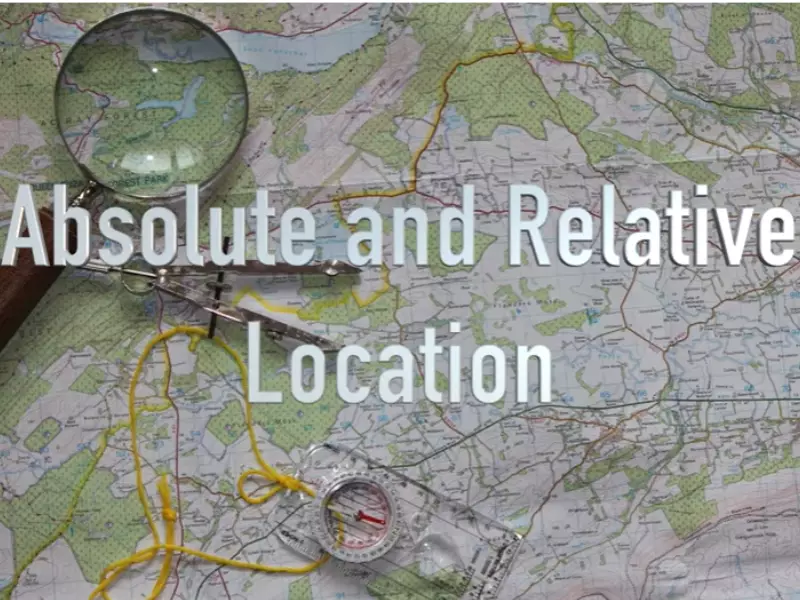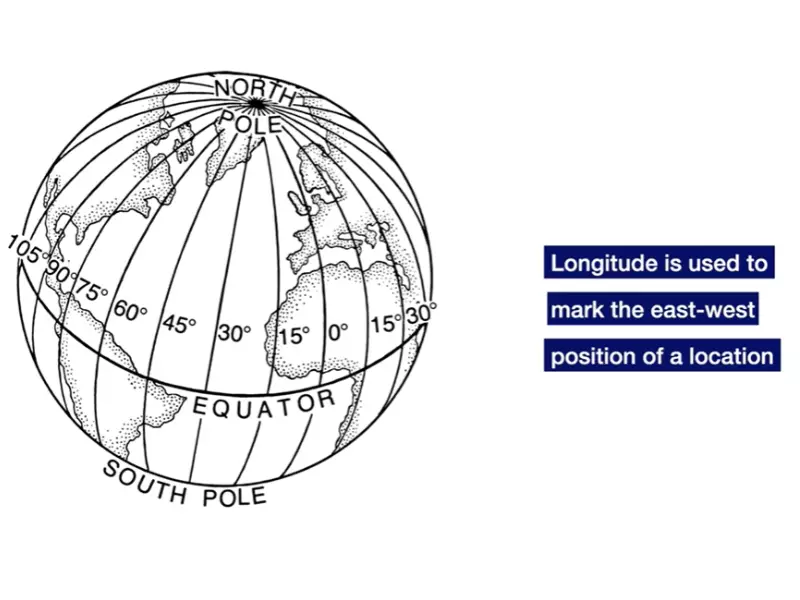The concept of location is foundational to our understanding of the world around us. It is a simple yet profound element that shapes our daily decisions, navigation, and comprehension of global dynamics. Whether it’s finding a new restaurant, plotting a route on a map, or studying the impacts of climate change across different regions, the idea of ‘where’ is central to both our routine and extraordinary explorations.
Absolute and relative locations are two fundamental ways to express the position of a place on the Earth’s surface. Absolute location specifies an exact point, using coordinates of latitude and longitude, providing a unique identifier for any location worldwide. In contrast, relative location describes a place’s position in relation to other landmarks or destinations, offering a context-dependent understanding that can vary based on the observer’s perspective.
This distinction is not just academic; it plays a crucial role in navigation, planning, environmental science, and even social interactions. Absolute location allows for precision and consistency, especially in global positioning systems (GPS) and geographic information systems (GIS). Meanwhile, relative location brings nuance and relational awareness, critical in cultural, social, and economic contexts. Together, they provide a comprehensive toolkit for deciphering the complexities of our world.

Absolute Location
Definition
Absolute location refers to the exact, fixed position of a place on the Earth’s surface. It’s a specific point that can be pinpointed using a universal set of coordinates, namely latitude and longitude. This method ensures that every location on Earth has a unique identifier, eliminating confusion and ambiguity.
Explanation of Latitude and Longitude
Latitude and longitude form a grid system used to describe the location of any point on Earth.
- Latitude lines run east to west and measure the distance north or south of the Equator. They are parallel to each other and are known as parallels.
- Longitude lines run north to south, converging at the poles, and measure the distance east or west of the Prime Meridian. These lines are known as meridians.
Together, these coordinates offer a precise way to express any location’s global position.
Examples
Let’s look at some examples to understand how absolute location works:
- The Eiffel Tower in Paris, France, is located at approximately 48.8584° N latitude and 2.2945° E longitude.
- The Statue of Liberty in New York, USA, stands at around 40.6892° N latitude and 74.0445° W longitude.
These coordinates pinpoint the exact location of these landmarks, accessible to anyone worldwide using a GPS device or a map.
Real-world Applications
Absolute location is crucial in various sectors, including:
- Navigation: GPS technology relies on latitude and longitude to provide accurate directions.
- Aviation: Pilots use coordinates to navigate safely and precisely between destinations.
- Shipping: Maritime navigation systems use absolute location to traverse oceans efficiently.
Importance
Understanding absolute location is vital for several reasons:
- Precision: It provides an unambiguous way to specify places.
- Global Standard: Latitude and longitude offer a universal language for location sharing.
- Emergency Response: Precise locations are critical for rescue operations during disasters.
Relative Location
Definition
Relative location describes a place’s position in relation to other landmarks or areas. Unlike absolute location, it is context-dependent and can change based on the observer’s perspective. It uses directional words, distances, and references to known places to convey location.
Relation to Other Places
Relative location helps people understand where something is by comparing it to something else. For example, saying “the cafe is next to the library” uses the library as a point of reference to locate the cafe.
Examples
Here are examples showcasing relative location:
- The Sahara Desert is north of the equator and south of the Mediterranean Sea.
- The Grand Canyon is east of Las Vegas and west of the Rocky Mountains.
These descriptions provide a sense of where these landmarks are located without needing precise coordinates.
Importance
The role of relative location extends beyond navigation, impacting:
- Culture: People’s perception of place and identity often relates to their surroundings.
- Economy: Business locations are frequently described in relation to consumer hubs or resources.
- Social Interactions: Directions and meetup plans often use relative locations for convenience.
Key Differences
Coordinates vs. Context
- Absolute Location uses coordinates (latitude and longitude) for precision.
- Relative Location relies on context, describing a place based on its surroundings.
Comparative Analysis
While absolute location provides a static, universal identifier for any spot on Earth, relative location offers a dynamic, relational view that can vary with perspective.
Static vs. Dynamic
- Absolute Location remains unchanged, providing a constant reference.
- Relative Location can change as the environment or context changes.
Navigation and Mapping
Both absolute and relative locations are used in navigation and mapping, but in different ways.
- GPS and Digital Maps: Use absolute location for accuracy and precision.
- Verbal Directions and Local Maps: Often rely on relative location for context and ease of understanding.

Uses in Real Life
Navigation Technologies
GPS and Digital Mapping
Global Positioning System (GPS) and digital mapping technologies revolutionized how we navigate our world. GPS uses a network of satellites to provide real-time location data, offering unparalleled accuracy and efficiency in navigation.
- Turn-by-Turn Navigation: Simplifies traveling by providing detailed directions.
- Location Sharing: Enhances safety and social connectivity.
- Geotagging: Allows users to add location information to digital media, enriching the context.
These technologies rely on absolute location to function but often incorporate relative location information to improve user experience, making it easier to understand directions in familiar terms.
Environmental Science
Research and Data Collection
In environmental science, location is pivotal for collecting data, monitoring ecosystems, and studying climate change.
- Biodiversity Studies: Scientists use location data to track species distributions and habitats.
- Climate Monitoring: Location-based sensors collect data on weather patterns, helping predict changes.
- Conservation Efforts: Precise location information is crucial for protecting endangered habitats and species.
Both absolute and relative locations are essential, offering exact coordinates for data collection and contextual understanding of environmental phenomena.
Urban Planning and Development
Planning Infrastructure around Location Contexts
Urban planners utilize both absolute and relative location information to design cities that are efficient, sustainable, and livable.
- Zoning Decisions: Location data helps determine the best uses for different areas, balancing residential, commercial, and green spaces.
- Transportation Networks: Planners use location analysis to optimize routes and improve connectivity.
- Emergency Services: Strategically placed based on location data to ensure quick response times.
This approach ensures that infrastructure development meets the community’s needs while considering environmental impacts and future growth.
Impacts on Society
Economic Implications
How Location Influences Trade and Business
Location plays a critical role in the economy, influencing everything from small businesses to global trade networks.
- Market Accessibility: Businesses choose locations based on proximity to markets, suppliers, and logistics networks.
- Real Estate Values: Location is a key factor in property demand and pricing.
- Global Trade: Ports and trade routes are strategically located to optimize international commerce.
Understanding location dynamics helps businesses make strategic decisions that can lead to success or failure in a competitive market.
Cultural Significance
Location in the Identity and Heritage of Communities
The relative location of a place often contributes to its cultural identity, shaping traditions, languages, and social norms.
- Historical Sites: Locations tied to significant events become part of a community’s heritage.
- Cultural Landmarks: Distinctive features or landmarks define the character of places, influencing local culture.
- Community Bonds: Shared location fosters a sense of belonging and identity among residents.
The cultural impact of location underscores the deep connections between people and the places they inhabit.
Environmental Concerns
Location’s Role in Environmental Issues and Conservation
The specific location of an area can significantly affect its environmental challenges and conservation needs.
- Vulnerable Regions: Coastal and low-lying areas face greater risks from climate change.
- Biodiversity Hotspots: Locations with unique ecosystems require targeted conservation efforts.
- Pollution and Resource Management: Industrial and densely populated areas face unique environmental pressures.
Recognizing the importance of location in addressing environmental issues is key to developing effective conservation strategies and promoting sustainable development.
FAQs
What is Absolute Location?
Absolute location refers to the precise, fixed position of a place on the Earth, identifiable by coordinates of latitude and longitude. This method of locating places is universal, allowing anyone anywhere to find a specific location without ambiguity.
How Does Relative Location Differ?
Relative location describes a place’s position in relation to other places, incorporating directions, distances, and landmarks. Unlike absolute location, it is subjective and can change based on the observer’s location or knowledge of the area.
Why is Understanding Both Locations Important?
Grasping both absolute and relative locations enriches our navigation capabilities, enhances spatial awareness, and fosters a deeper understanding of geographic, social, and economic interrelations. It allows individuals to communicate locations more effectively, cater to diverse needs, and connect with the world in a more informed way.
How Do Navigation Technologies Use These Concepts?
Navigation technologies, like GPS and mapping software, primarily use absolute location for pinpointing precise positions. However, they often incorporate relative location information to provide directions, suggest nearby points of interest, and enhance user experience with contextually relevant data.
Conclusion
Understanding the difference between absolute and relative location equips us with a deeper appreciation of the world’s complexity and our place within it. It not only aids in our daily navigations and decisions but also enhances our grasp of geographical, cultural, and socio-economic dynamics. By employing both concepts, we can communicate more precisely, navigate more efficiently, and comprehend the intricate tapestry of our global landscape.
This dual approach to understanding location fosters a richer, more nuanced engagement with the world around us. It reminds us that our perception of place is both a matter of precise positioning and relational context, each offering unique insights into how we interact with our environment and each other.
